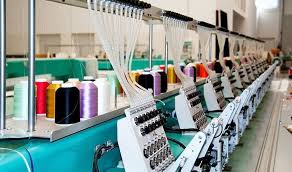Embroidery digitizing services have become increasingly popular in recent years as more and more individuals and businesses look to add a personal touch to their garments and products. By utilizing these services, you can easily convert your designs into digital files that can be used by embroidery machines to create beautiful, intricate designs on fabric. In this guide, we will walk you through the process of utilizing embroidery digitizing services step by step, from understanding the basics to communicating with your digitizer and reviewing the final design.
Understanding Embroidery Digitizing
Embroidery digitizing transforms artwork into a format an embroidery machine can interpret, turning creative designs into stitch instructions for fabric embellishment. This complex process requires skill to determine the appropriate stitch type, direction, and density that will best reproduce the original design on the chosen material. Key to successful digitization is a deep understanding of both the technical aspects of embroidery machines and the aesthetic nuances of embroidery art. This foundational knowledge ensures that the digitized design not only replicates the visual appeal of the original artwork but also ensures it is perfectly suited for the physical embroidery process, achieving the desired outcome on the final product.
Choosing the Right Embroidery Digitizing Service
To select a suitable embroidery digitizing service, prioritize providers with a solid track record of producing quality digitized designs. Consider services renowned for their swift delivery and exceptional support, ensuring your project remains on schedule and any issues are promptly addressed. Investigate the company's portfolio and customer testimonials to gauge their capability to meet your specific needs. This evaluation will assist in identifying a service that not only understands the intricacies of embroidery digitization but is also aligned with your project's requirements, facilitating a smooth and successful collaboration.
Preparing Your Design for Digitization
To ensure a smooth digitization process, it's vital to properly prepare your artwork before submission. Begin by refining your design, ensuring it is high resolution and devoid of any unwanted marks or blemishes that could interfere with the digitization process. Outline specific details such as the design's intended size, the fabric type it will be embroidered on, and preferred colors or threads. This preparation not only aids your digitizer in understanding your vision but also enhances the efficiency and accuracy of the conversion process. Additionally, consider the complexity of your design and its suitability for embroidery, keeping in mind that some details may need to be simplified to achieve optimal embroidery results. Providing a detailed brief to your digitizer, including any inspirations or essential elements of your design, will facilitate a more precise and satisfying outcome.
Communicating with Your Digitizer
Effective communication with your digitizer plays a crucial role in ensuring the success of your embroidery project. From the outset, provide a clear and comprehensive brief, including all necessary details about your design preferences, fabric choice, and the intended use of the embroidered item. Be specific about colors, sizes, and any other important aspects that could affect the custom embroidery digitizing outcome. During the digitization process, maintain an open line of communication. This allows you to receive timely updates, provide immediate feedback on any preliminary designs, and make necessary adjustments. Remember, asking questions is essential if anything seems unclear or if you're uncertain about how a particular aspect of your design will translate into embroidery. It's better to address these issues early on rather than after the digitization has been completed. Your willingness to collaborate and provide constructive feedback will greatly contribute to achieving a design that perfectly aligns with your vision.
Reviewing Your Digitized Design
Upon receiving the digitized version of your design, conduct a thorough examination to identify any potential issues or discrepancies. Focus on the accuracy of the design replication, including stitch type, direction, and density, ensuring they align with your original vision. Evaluate the color accuracy and placement, as well as the overall aesthetic appeal of the design on the intended fabric. If discrepancies are found, clearly articulate the necessary adjustments to your digitizer, providing specific feedback to guide the revision process. This detailed scrutiny is crucial to guarantee the digitized design reflects your expectations and is ready for the final embroidery phase. Act promptly in communicating any modifications needed to avoid delays in your project timeline.
Final Steps and Troubleshooting
After ensuring your digitized design meets your expectations and implementing any required revisions, you are ready to move forward with the embroidery process. Your digitizer will supply you with the final digital file, formatted for your specific embroidery machine. Before initiating the embroidery, it's advisable to run a sample on a piece of fabric similar to your final product. This test allows you to identify and rectify any potential issues in stitch quality, color accuracy, or design placement. Should you encounter challenges during this phase, contacting your digitizer promptly for advice or corrections is crucial. They can offer insights or adjustments to optimize the embroidery outcome. This proactive approach in troubleshooting helps in avoiding common pitfalls and ensures your project’s success, maintaining the integrity of your original design vision.
Conclusion
Navigating the journey of embroidery digitizing services can transform your creative ideas into tangible, embroidered art. By diligently selecting a competent digitizing service, meticulously preparing your artwork, and fostering clear communication with your digitizer, you lay the groundwork for a successful digitization process. This how-to guide has led you through essential steps, emphasizing the importance of each stage—from choosing the right service to conducting a final review of your digitized design. Remember, collaboration and detailed feedback are key to fine-tuning your design to perfection. Embroidery digitizing opens up a realm of possibilities for customizing apparel and accessories, making it an invaluable tool for both personal and commercial projects. With these guidelines, you're well-equipped to embark on your embroidery digitizing endeavors, ensuring your designs are brought to life with precision and vibrancy.


No comments yet